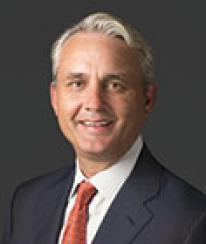To view a PDF of the report, click here.

The low rate environment is challenging plans in a number of ways – from rising liabilities to much lower returns from risk-free assets. Pension plans are looking for solutions – especially those that help reduce funding volatility and address sequence of return risk. Overlay strategies are designed to provide this – which is why their growth has been so pronounced. In the U.S., the use of derivatives by pension funds increased 56% from 2011 to 2015. This means that 70% of U.S. funds today are using derivatives as part of their investment strategy.1 That’s why we’re excited to offer this range of solutions to our clients.
How do they work, and is there a key factor driving the increased use? A big one is helping plan sponsors achieve their liability-driven investing strategies. Overlays use derivatives such as interest rate swaps and treasury futures. These instruments are extremely flexible and can be tailored to more closely reflect liability cash flows and interest rate sensitivities. Because these derivatives can provide a portfolio with more interest rate exposure per investment dollar, plans can hedge their interest rate risk without necessarily reducing their allocation to higher return-seeking asset classes.
One way to accomplish this goal is through an overlay completion solution for a Liability Driven Investing strategy. This may allow a plan to increase its interest rate hedging to reduce funding volatility, with little impact to the plan’s underlying asset allocation.
Another good example is a swaption overlay collar, which can be constructed to provide a zero or reduced premium cost method for plans to neutralize the impact of substantial interest rate changes on a liability portfolio – and help stabilize its funded status while maintaining its current asset allocation. A third alternative strategy would be to allocate more physical assets to long duration bonds to help a plan maintain a desired level of interest risk hedging and then add return-seeking exposure through synthetic equity beta.
Can overlays be used in other ways?
Yes. Overlays can be used in others ways to mitigate risk and/or enhance returns. The challenges faced by each plan vary, so every strategy is customized. For example, allocations have recently been made to a new asset category called Crisis Risk Offset for risk mitigation strategies. These strategies attempt to find alternative beta or asset classes that perform well when in risk-off environments. Overlays can be an efficient use of capital to improve these strategies.
What does Ryan Labs bring to the table?
We bring expertise and scale, which was one of the primary reasons for our becoming part of the Sun Life Investment Management group of companies in 2015. The overlay solutions combine our proven capability in actively managed fixed income strategies with the depth and experience of the Sun Life Institutional Investments (U.S.) LLC derivatives team located in Wellesley, Massachusetts. It gives our clients access to a team that manages approximately US$43 billion in notional value of the Sun Life Financial group of companies’ portfolio in derivative positions.2
1 CIO Magazine, Survey of U.S. pension funds, November 17, 2015
2 As of December 31, 2015
Overlay strategies involve the use derivative instruments (such as interest rate swaps) to obtain exposure greater than the actual funded amount of the mandate. Derivatives may involve certain costs and risks such as liquidity, leverage, interest rate, market, credit, management and the risk that a position could not be closed when most advantageous. Investing in derivatives involves leverage and could lose more than the amount invested. This page only contains summary information regarding the overlay investment management approaches and is not a complete description of the investment objectives, portfolio management and research that supports these approaches. There is no guarantee that these investment strategies will work under all market conditions. Each investor should evaluate their ability to invest long-term, especially during periods of downturn in the market. This material contains opinions and such opinions are subject to change without notice.





